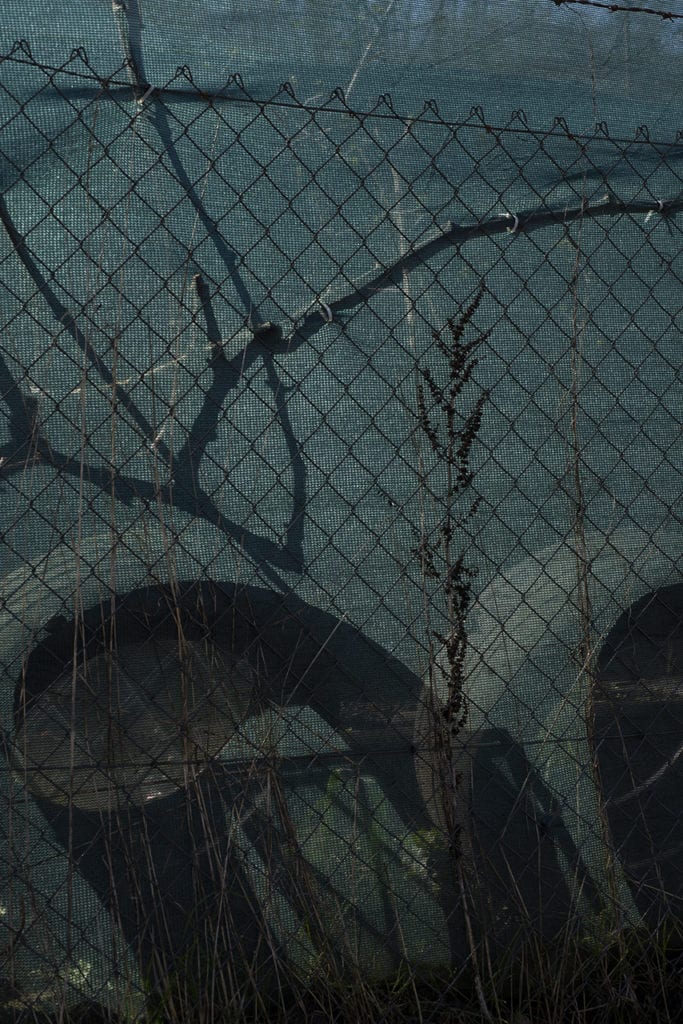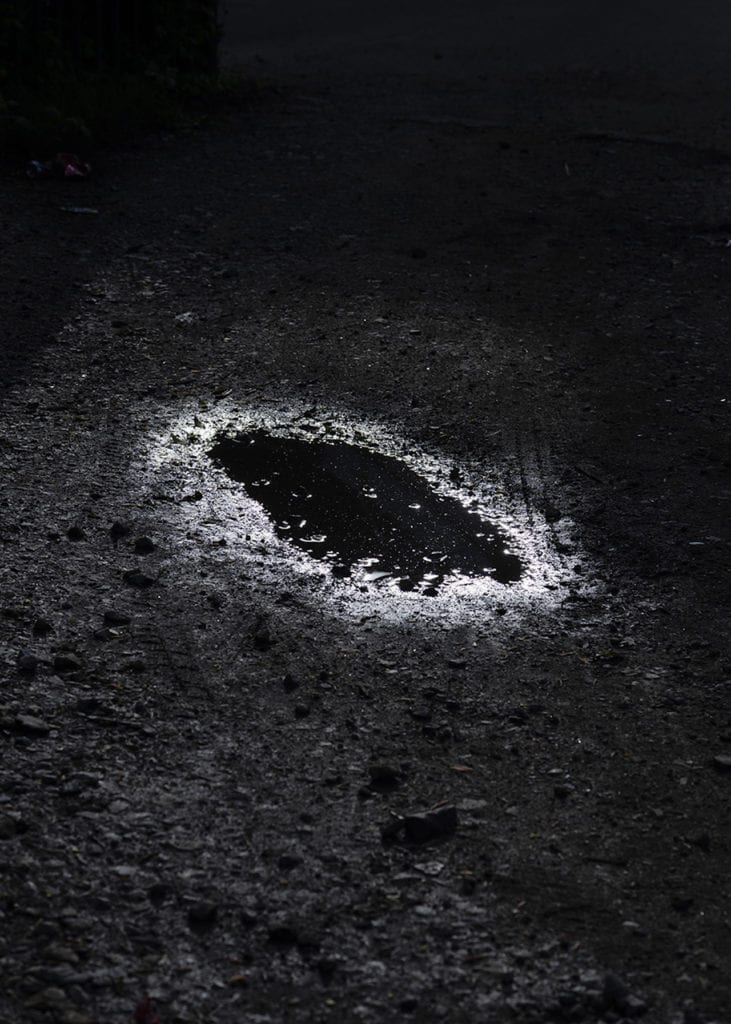Raised in rural Warwickshire, Jon Pountney first picked up a camera in 1995, gifted by his grandmother on his 17th birthday. Finding influences in the work of Ian Berry and Don McCullin, as well as painters such as Paul Nash and Graham Sutherland, Pountney’s continued interest has been in nurturing “a sense of place”.
“My work is more about a wistful dislocation of time and a sense of nostalgia than contemporary social documentary,” he says. After living and working in Cardiff, where he attended university, Pountney moved to Treforest, a village near Pontypridd, Wales, where he has lived for five years. His recent work continues to explore his ongoing fixation with the landscape and its communities, in surrounding towns like Treorchy and Blaenavon.
Here, he shares images made during the Covid-19 lockdown, along with his diary entries — a document of “a time of reflection, education and growth”.
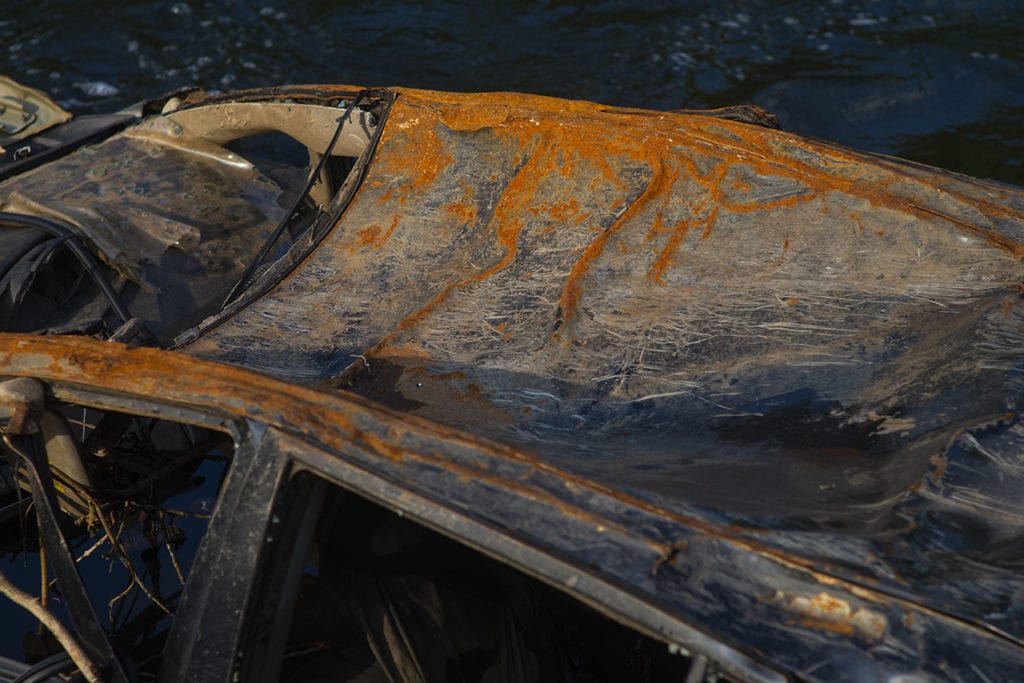
Yesterday was a funny day.
Because it’s late March, the full sun had a certain somnolence to it. It doesn’t quite get to its full zenith, and so the day has that feel of just-before-dusk. The light is all at an angle, and unlike summer, there are always long shadows. A prolonged feel of waiting for what is just about to happen; dusk is the end of work, the stopping of playing outside, heading for home.
The light made things waxy and blue, almost real, but the whole atmosphere was of unreality, a slightly dreamlike state. Behind the house on the tip, the quiet, the lack of noise, carried on a breeze that was a touch too cold, was strange; to be able to hear birds of prey was a pleasure.
Then to walk in streets was to again experience a feeling of sluggish ennui, the atmosphere of a permanent tea time — voices in gardens, TVs heard through open windows, smells of cooking, but scarcely a soul was seen. Flitting spectres in gloves and masks, seen from a distance. Cars pass by, windows firmly shut on a sunny day. Cats and jackdaws seem to look around for the cause of the silence.
It’s quieter again today.
The only sound is the tap of branches restlessly jerking together in the wind. A bin bag is caught on a bramble the thickness of a thumb. It flaps and gags, turning itself inside out. Within an empty human environment of streets and houses staring glassily on, traces of people become strangely poignant.
Randomly rejected shoes, jackets and even litter become important moments in a landscape seemingly abandoned. I’ve started walking the back lanes, where litter lingers, and people are less precious about presentation; these hinterlands reveal a hundred tiny stories about lockdown. Snatches of conversation, news bulletins and music mingle and reassure. There are still people here. But they just can’t be seen.
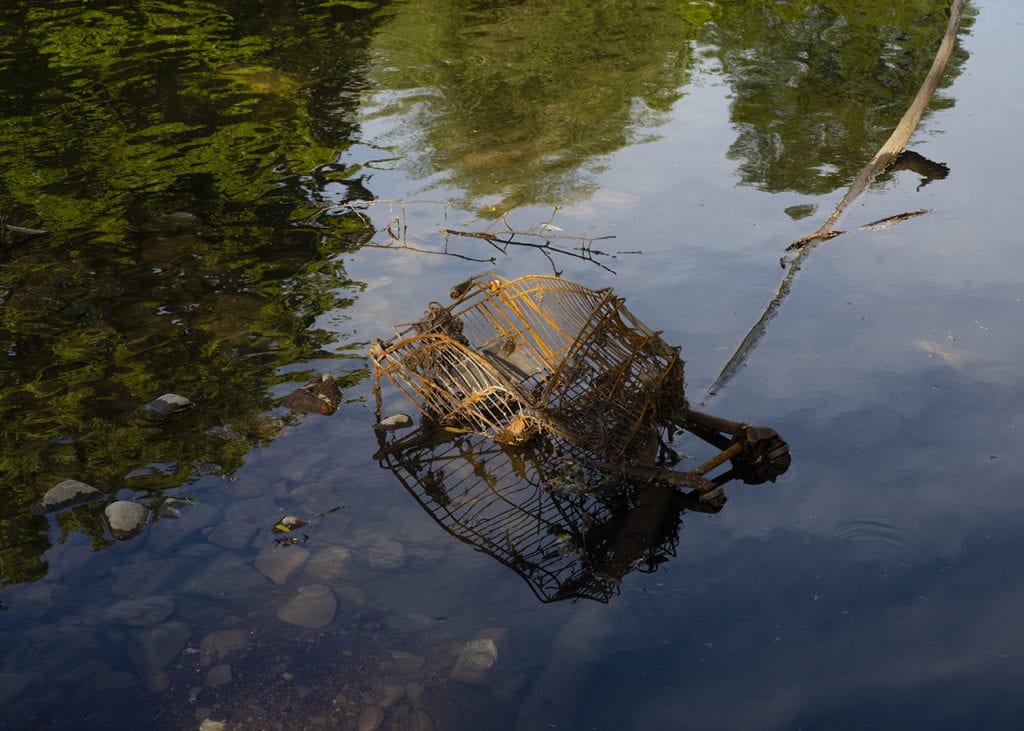
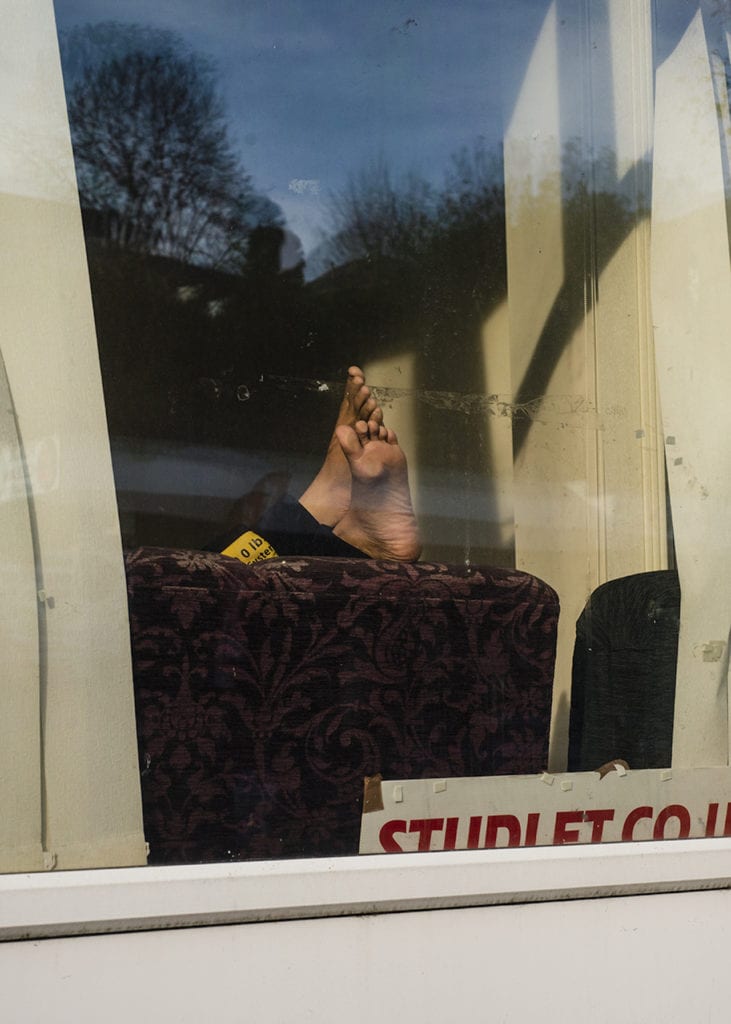
A month has passed.
The weather has been almost unprecedented in its pleasantness. If this virus wasn’t happening, then the weather would be all the media was talking about. The days and weeks of a blank blue sky have only compounded the unrelenting unreality of the situation. The feeling is of something going on, far away, decisions being made, and struggles being related to us through screens. Is any of it even real? To get away from the monotony of the news screens, I’ve been walking further and further, taking in a bigger and bigger area.
One day I see a man by the river collecting metal and cable. Later on I smell from the thick blue smoke that he is burning off the plastic. He gives me an enthusiastic thumbs up, and I find this purely dystopian scene strangely uplifting. There is something almost medieval in the simplicity of what he is doing. Further into the river there is a brand new Toyota, and I wonder if he is trying to work out a way of getting this huge, useless object out of the water to sell for scrap.
It’s like a broken future is already staring me right in the face.
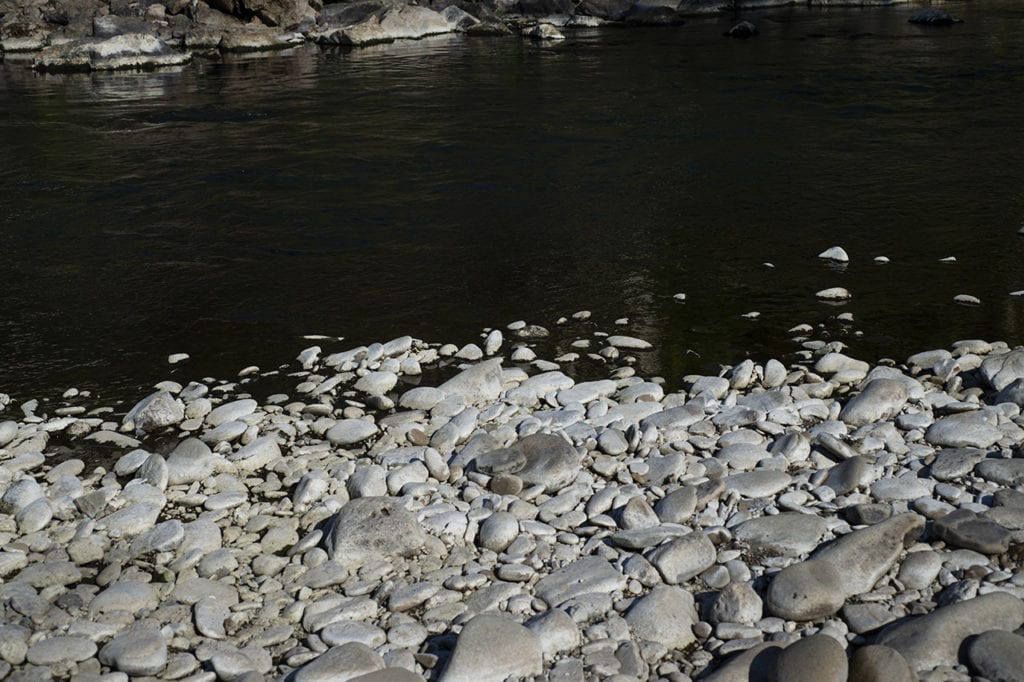
—

